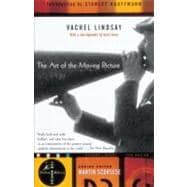
| Introduction to Modern Library: The Movies | p. v |
| Introduction | p. vii |
| A Word from the Director of the Denver Art Association | p. xxi |
| The General Photoplay Situation in America, January 1, 1922, Especially as Viewed from the Heights of the Civic Centre at Denver, Colorado, and the Denver Art Museum, Which Is to Be a Leading Feature of This Civic Centre | p. 1 |
| The Outline Which Has Been Accepted as the Basis of Photoplay Criticism in America, Both in the Studios of the Los Angeles Region, and All the Serious Criticism Which Has Appeared in the Daily Press and the Magazines | p. 19 |
| The Point of View | p. 21 |
| The Photoplay of Action | p. 25 |
| The Intimate Photoplay | p. 30 |
| The Motion Picture of Fairy Splendor | p. 38 |
| The Picture of Crowd Splendor | p. 43 |
| The Picture of Patriotic Splendor | p. 50 |
| The Picture of Religious Splendor | p. 59 |
| Sculpture-in-Motion | p. 65 |
| Painting-in-Motion | p. 75 |
| Furniture, Trappings, and Inventions in Motion | p. 84 |
| Architecture-in-Motion | p. 95 |
| Thirty Differences between the Photoplays and the Stage | p. 105 |
| Hieroglyphics | p. 116 |
| More Personal Speculations and Afterthoughts not Brought Forward so Dogmatically | p. 127 |
| The Orchestra, Conversation, and the Censorship | p. 129 |
| The Substitute for the Saloon | p. 139 |
| California and America | p. 145 |
| Progress and Endowment | p. 150 |
| Architects as Crusaders | p. 161 |
| On Coming Forth by Day | p. 166 |
| The Prophet-Wizard | p. 171 |
| The Acceptable Year of the Lord | p. 180 |
| Appendix | p. 189 |
| Index | p. 195 |
| Table of Contents provided by Syndetics. All Rights Reserved. |
The New copy of this book will include any supplemental materials advertised. Please check the title of the book to determine if it should include any access cards, study guides, lab manuals, CDs, etc.
The Used, Rental and eBook copies of this book are not guaranteed to include any supplemental materials. Typically, only the book itself is included. This is true even if the title states it includes any access cards, study guides, lab manuals, CDs, etc.
Excerpted from The Art of the Moving Picture by Vachel Lindsay
All rights reserved by the original copyright owners. Excerpts are provided for display purposes only and may not be reproduced, reprinted or distributed without the written permission of the publisher.